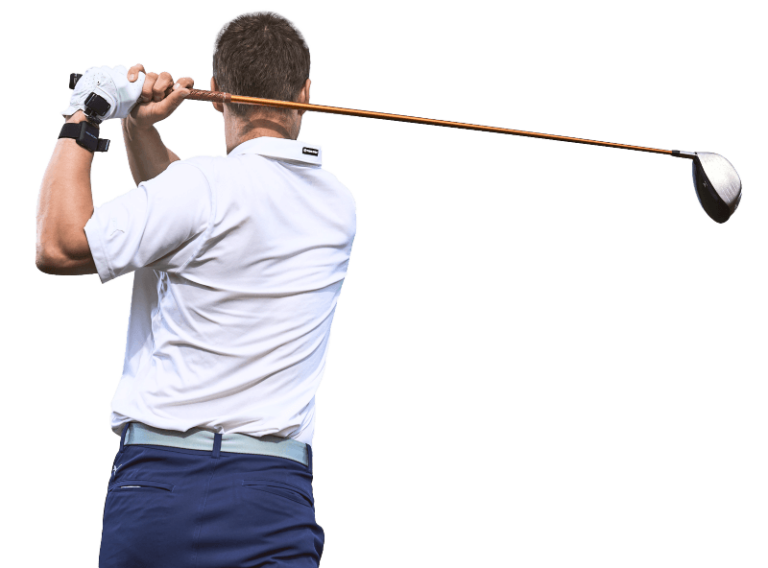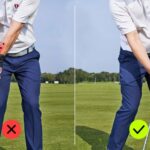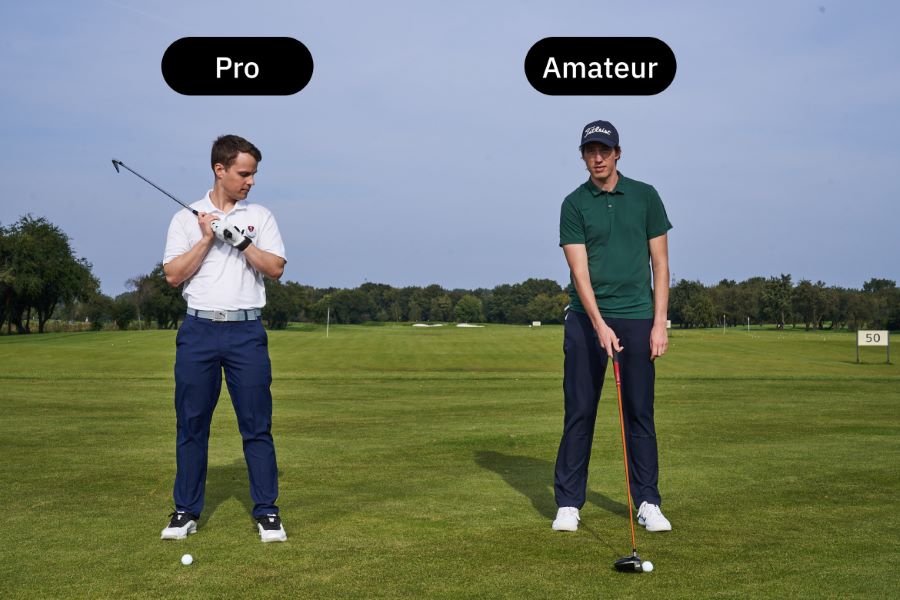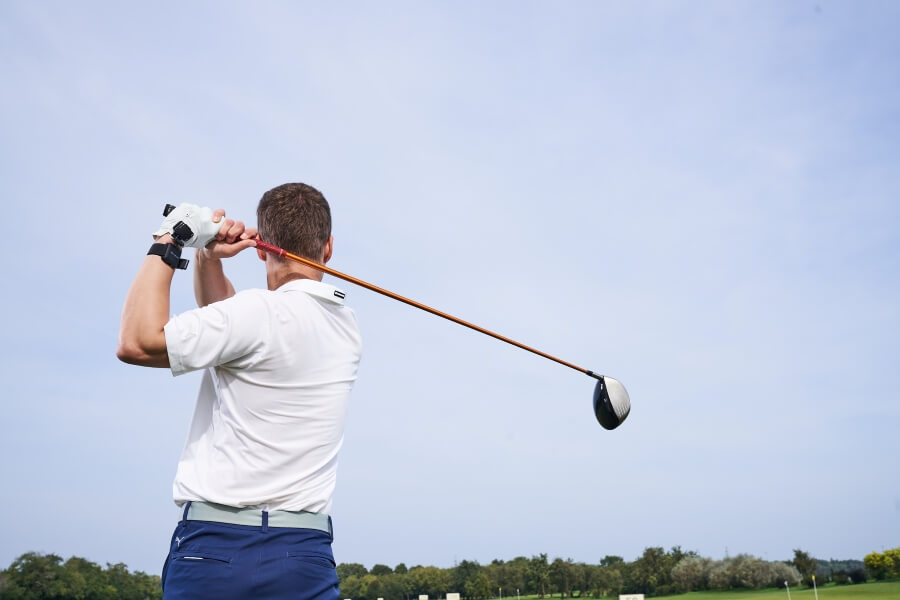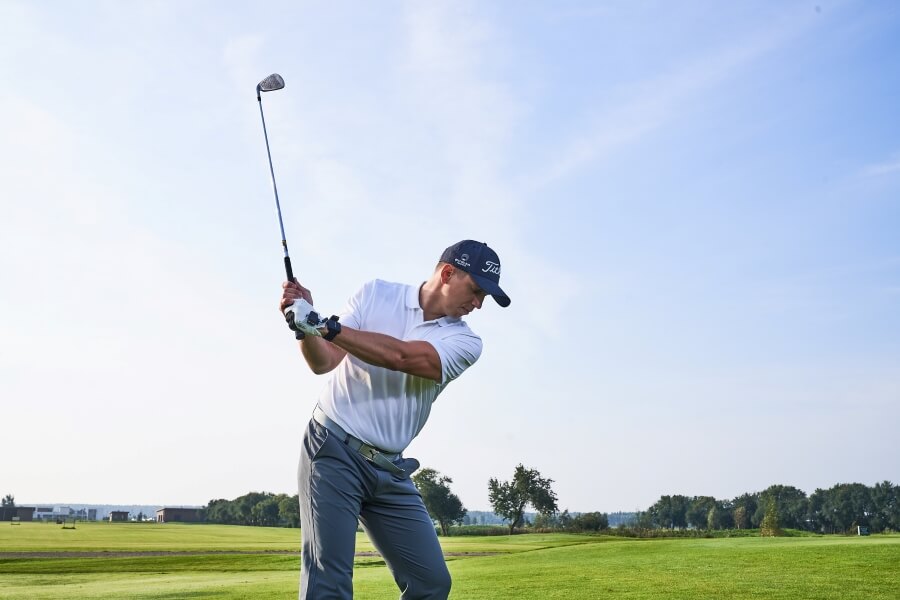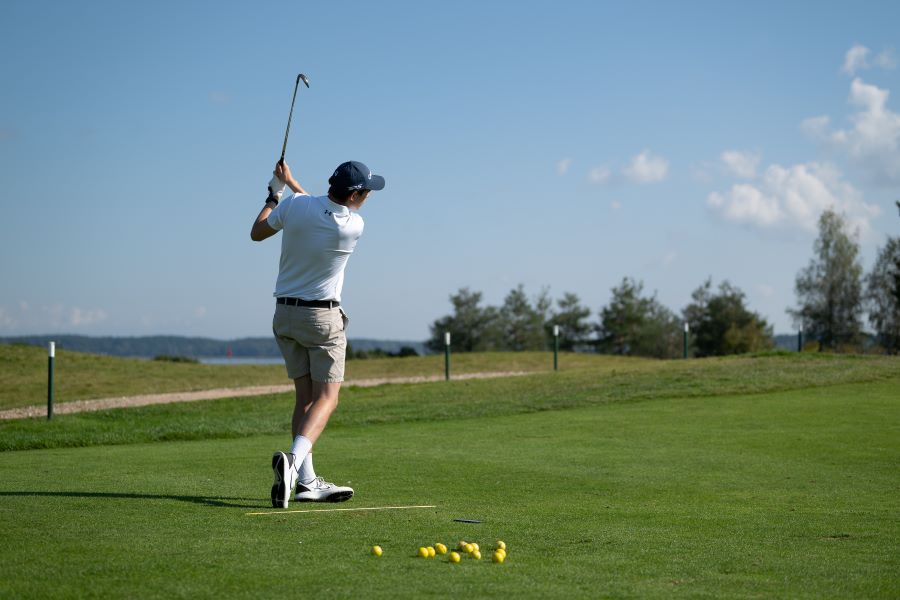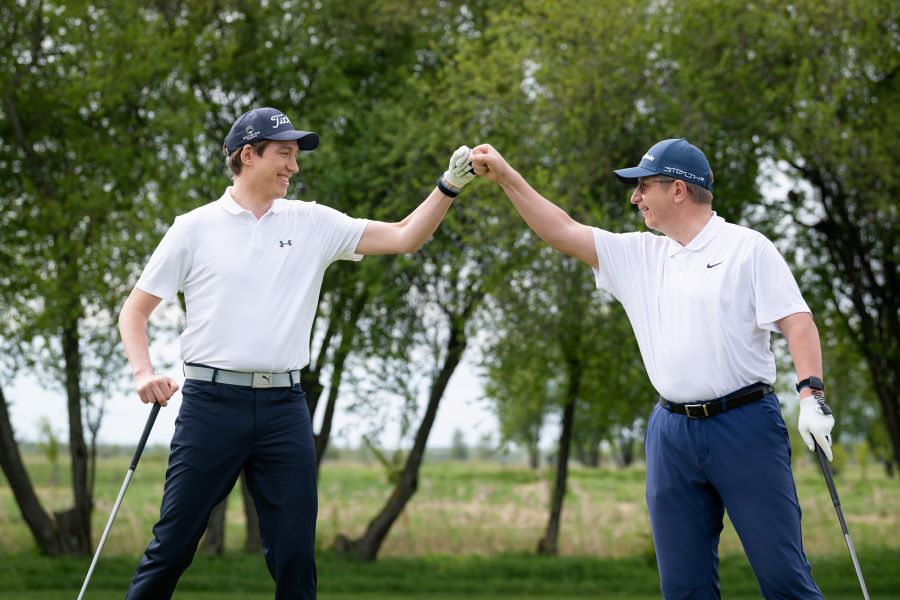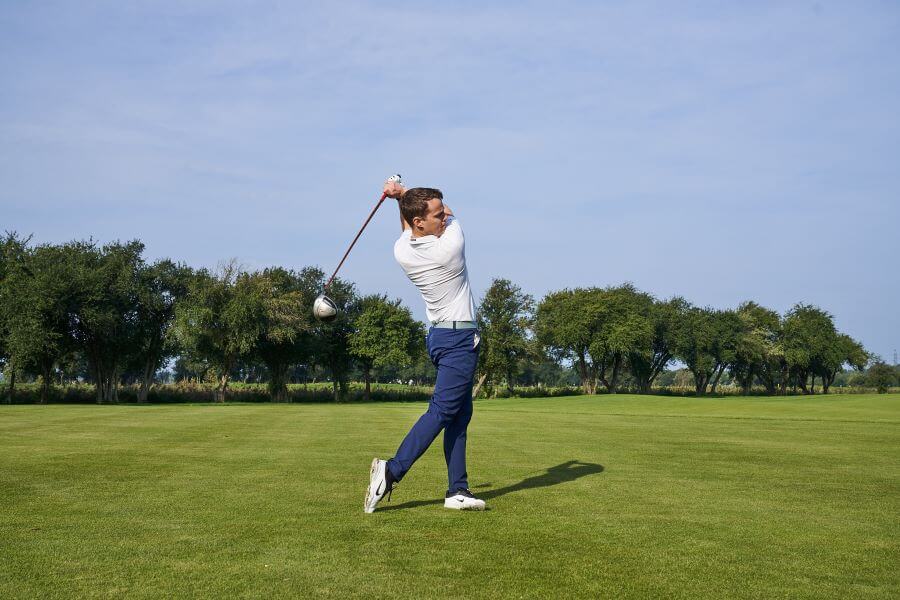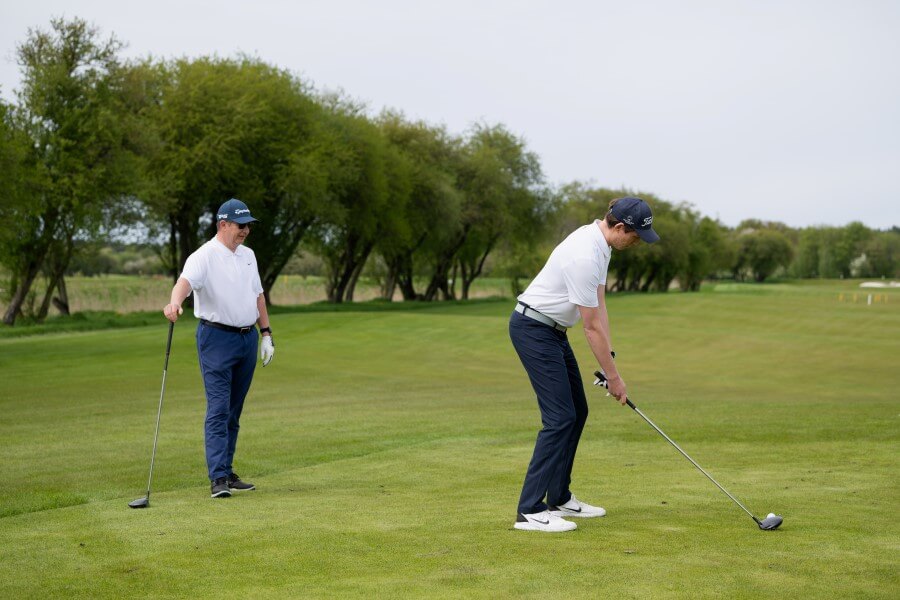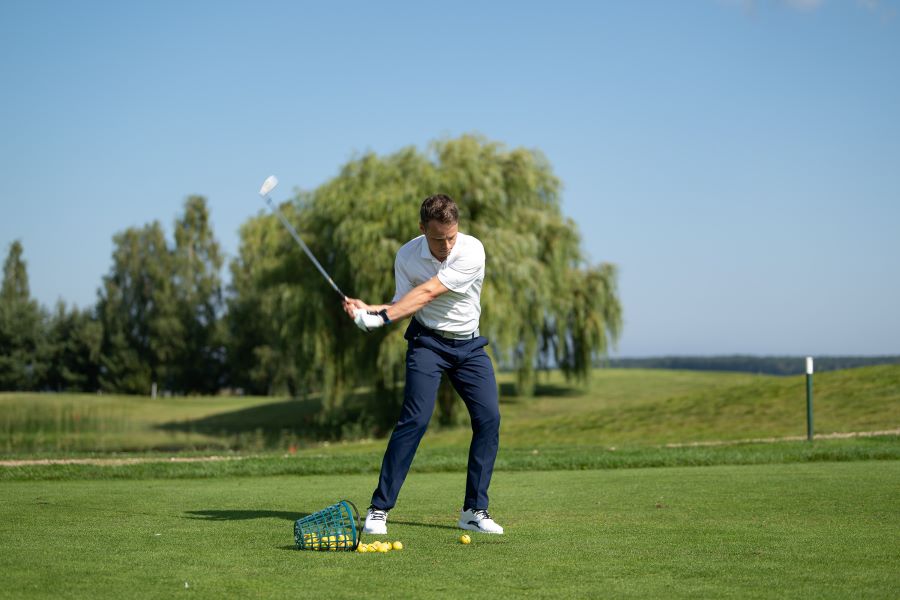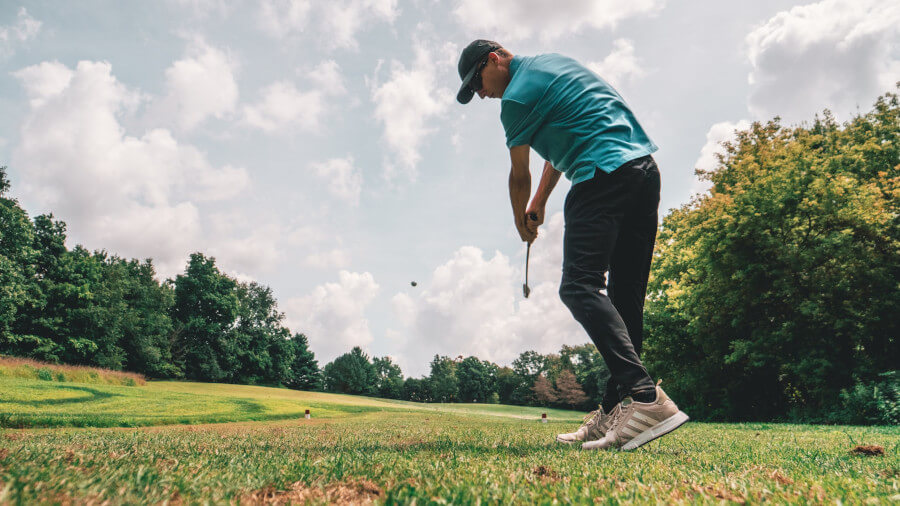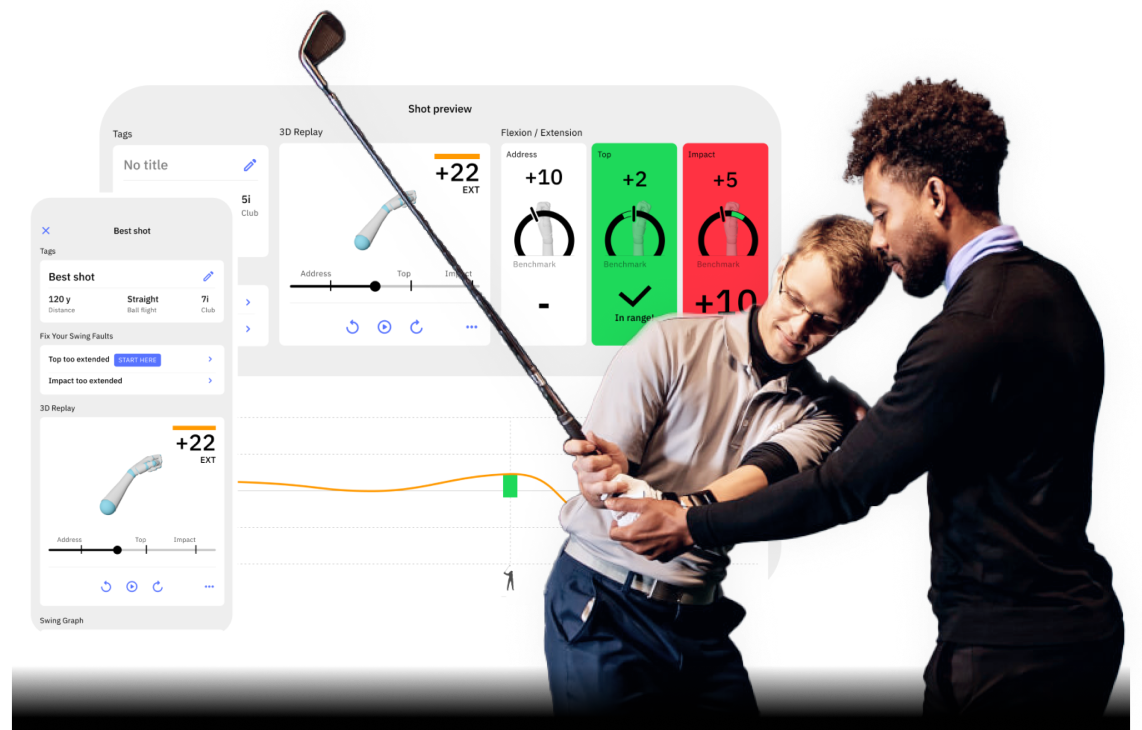How to Hit a Driver Consistently for More Fairways in Regulation (10 Fixes That Actually Work)
Learning to hit a driver isn’t the hardest thing in golf, but doing it consistently can be.
Issues like poor posture, wrist extension at the wrong time, grip pressure problems, or even using the wrong shaft flex can all lead to inconsistent results off the tee.
Some golfers get so frustrated they avoid the driver altogether. That usually ends up costing distance and strokes.
In this guide, we’ll share key tips to help you hit the driver more consistently and find more fairways. With a better understanding of what matters most, you’ll not only gain control off the tee, you’ll start every hole with more confidence.
How to Hit Driver Consistently (Key Takeaways)
If you need to bookmark this post and read it the next time you are on the driving range, here are a few key pieces of information to take with you right now. To hit a driver consistently:
- Turn your feet outwards a little to increase backswing rotation.
- The hands can’t get behind the clubhead; forward shaft lean exists in the driver swing, too.
- Reduce grip pressure for better wrist action and clubface control.
- Keep the ball lined up with your front heel at setup.
- Adjust the tee height to match your attack angle.
- Keep your lead wrist flat at the top of the swing to help shallow the shaft.
- Rotate your hips as the first move down from the top of the backswing.
- Get a good shoulder turn right from the start and keep it going through impact.
Prefer watching to reading? Check out this video recap on how to consistently hit your driver and improve your distance.
Contents
- 10 Actionable Tips to Hit a Driver Consistently
- 1. Adjust Your Tee Height
- 2. Don’t Let the Clubhead Get in Front of the Hands
- 3. Stand a Little Taller
- 4. Turn Your Feet Out (Trail Foot to Optimize Rotation on the Backswing)
- 5. Reduce Grip Pressure
- 6. Ball Aligned with Front Heel
- 7. Increase Your Hand Path Length for a More Consistent Swing
- 8. Move Toward Flexion at the Top for a Square Clubface
- 9. Shift Hips to Initiate Downswing
- 10. Rotate Your Shoulders Through Impact
10 Actionable Tips to Hit a Driver Consistently
There are numerous reasons why you may not hit a driver consistently. These include poor posture, limited hip turn, and a lack of shoulder rotation.
However, what’s more important than these causes are the solutions.
Here are 10 tips to hit a driver consistently that will benefit any golfer.
1. Adjust Your Tee Height
The first step to hitting your driver consistently is teeing the ball at the right height for your angle of attack.
You want to strike the ball slightly above center on the clubface to create high launch and low spin, two keys to distance. Many amateurs tee it too low, thinking a lower flight means more control. It doesn’t.
Teeing it a little higher encourages a shallower angle of attack, helps you find the sweet spot, and gives you a better chance at both distance and accuracy.
2. Don’t Let the Clubhead Get in Front of the Hands
If you are a good ball striker with your irons and wedges, you have your hands ahead of the ball with some forward shaft lean at impact.
The driver tends to confuse golfers because they feel like this forward shaft lean is a negative in the driver swing.
The hands still need to be in line with the ball to get the correct impact position.
You’ll be catching the golf ball as part of your upswing, but if the clubhead moves ahead of the hands, you increase the extension of your lead wrist and cause inconsistency in the shots.
Work on keeping your head behind the ball and ensuring your lead wrist stays straight in line with the clubhead, not behind it.
3. Stand a Little Taller
Next you will want to make sure your spine and knee flex is correct. One mistake we often see golfers make is excessive spine tilt forward.
The driver is longer and standing a bit more upright can help you get longer and straighter shots.
From the upright position, bend your spine slightly forward and flex your knees until you feel comfortable and balanced. The weight should center itself at this point. Next, approach the ball and attempt to replicate this position.
The driver posture is a little different than the iron posture, and you have to be able to make this adjustment.
4. Turn Your Feet Out (Trail Foot to Optimize Rotation on the Backswing)
If you have limited movement in your lower body, turn both feet out just a quarter turn. You can get a little better rotation without feeling restricted at the top of the swing.
Generating maximum energy of your backswing is vital to accelerate clubhead speed and power into impact.
If you lose power before you reach the top of your backswing, you have nothing to unload on the way down, resulting in a slower swing speed and a loss of distance.
This video is a lesson from our full driver course. Click here to access the complete course and start hitting your driver more consistently!
5. Reduce Grip Pressure
It’s natural to want to grip the club tight and swing hard, but that usually works against you.
A tight grip creates tension in your arms and shoulders, making it harder to rotate and stay on plane. It also limits your shoulder turn, which affects your ability to get the club into a good position at the top.
The goal isn’t a loose grip; it’s the right grip. One that allows the club to release properly through impact. Try swinging with an intentionally light grip, then with an overly tight one. Your ideal pressure is probably somewhere in between.
6. Ball Aligned with Front Heel
Once your fundamentals check out, address the ball and set up for your shot.
Align the ball with the inside of your front heel to account for the added length of your driver shaft.
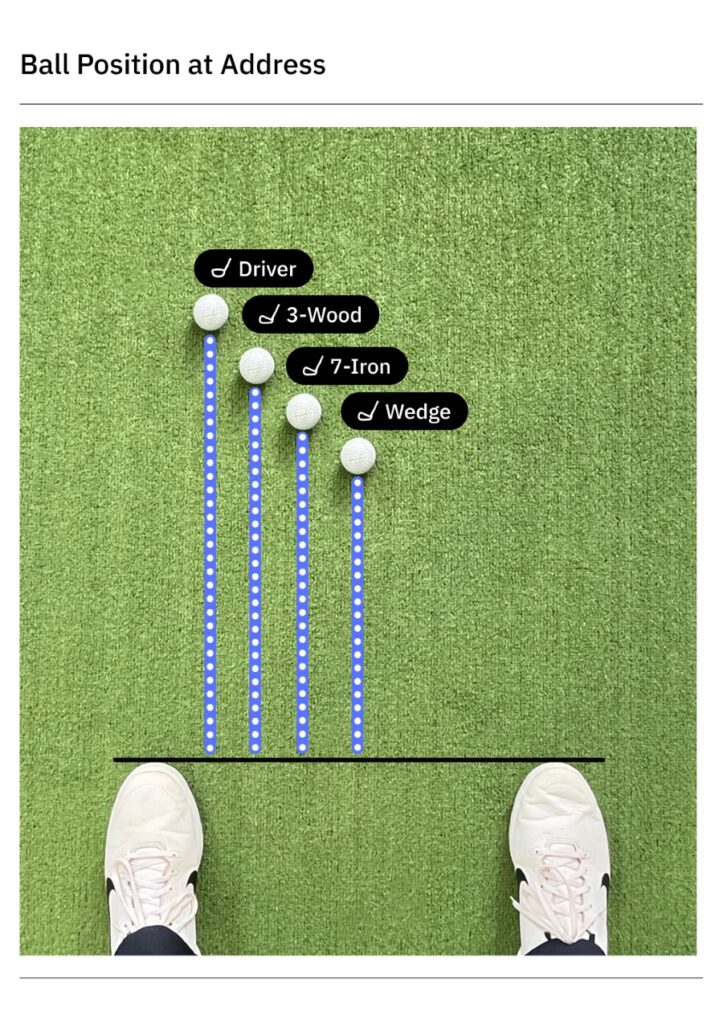
In addition, the forward ball position encourages you to strike the golf ball on the upswing, sweeping it into the air.
If the ball is too far back in the stance, you will hit down on the golf ball, which will result in yardage loss and sometimes even a slice. If the golf ball is teed up past your front foot, you’ll have to reach for it and risk topping it.
7. Increase Your Hand Path Length for a More Consistent Swing
If you struggle with driver consistency, take a closer look at your backswing, specifically, how far your hands travel.
A longer hand path gives you more time and space to sequence the swing properly. When your hands stop short or get too narrow, you often rush the downswing or rely too much on your hands to square the clubface. That’s where inconsistency creeps in.
To increase hand path length without losing control, focus on making a full turn with your body, hips, shoulders, and torso, while keeping the club wide and on plane.
Small adjustments like flaring your feet, pulling your trail foot slightly back, and allowing some knee flex can help you rotate more and stay balanced.
8. Move Toward Flexion at the Top for a Square Clubface
One of the most common reasons golfers struggle with consistency off the tee is an open clubface at impact, and that often starts with too much wrist extension at the top of the backswing.
When your lead wrist is overly extended at the top, the clubface opens, and you’re forced to rely on timing and hand manipulation to square it, resulting in slices, blocks, or inconsistent strikes.
The fix? Learn to move toward flexion at the top.
Flattening or slightly flexing the lead wrist at the top helps square the clubface before the downswing begins. From there, you can rotate and release naturally, leading to more centered strikes and better ball flight.
If you’re working on this move, the Combined Top Drill is a great place to start:
Combined Top Drill in HackMotion
Train your top position by mastering optimal wrist angles. Challenge yourself to reach the ideal wrist position during a full-speed backswing.
HackMotion Combined Top Drill – Step by Step
- Step 1: Make a full-speed backswing, just like a real shot, no pausing.
- Step 2: At the top, check your wrist angle using HackMotion. You want to be in the “green zone” (neutral or slightly flexed).
- Step 3: From that position, transition into your downswing and swing through.
- Step 4: Repeat, gradually reducing the pause at the top until you can blend the move into a fluid swing.
9. Shift Hips to Initiate Downswing
Many golfers are curious about how to start their downswing to get consistent drives.
When you reach the top of your backswing, you should feel more weight on your trail side, which is where you store your energy to unleash on the downswing.
From the top of the swing, you need to start shifting your weight towards the front leg. This creates forward momentum that in turn, causes your shoulders to rotate.
The result is maximized power, lag, and control of the clubface.
Instead of initiating the transition with the hips, many players rely heavily on their arms and shoulders to get the club down to the golf ball. When your swing is all about the arms, you lose power.
10. Rotate Your Shoulders Through Impact
Finally, rotating your shoulders through contact is crucial for achieving optimal clubhead speed, power, and accuracy off the tee.
Ultimately, you will make cleaner contact with the ball and increase yardage by ensuring your shoulders keep turning. If you stop at the ball or forget to turn the shoulders to begin with, expect a loss of swing speed, power, and control of the clubface.
The next time you take a driver practice swing, pay attention to where your shoulders are at impact. If you find them open to the target, increase your turn rate to square them up at contact.
At the end of your swing, make sure you have fully rotated your shoulders so you are facing the target.
Summary
The driver is the longest and most powerful club in the bag, but that also makes it one of the hardest to control.
Learning to hit it consistently starts with small but crucial adjustments: the right tee height, proper setup posture, increased hand path length, and minimizing excessive wrist extension at the top. Getting these elements right can help you shallow the club, square the face, and repeat solid strikes.
Tools like HackMotion can guide you in optimizing wrist angles, especially at the top of the backswing, where inconsistency often begins. Training these positions leads to better control, more consistent distance, and ultimately, more fairways.
